FIFA Acknowledges Historic Win of Mohun Bagan Club’s IFA Shield Victory, 1911
Compiled by Asim DEb
For the 2017 FIFA U-17 Men’s World Cup, FIFA decided the time 07:11 PM to launch ticket sales. Any idea why it was so?
Here is the reason.
It is a symbolic recognition and gesture of FIFA, paying tribute to Mohun Bagan’s win of IFA Shield of the year 1911. For mathematical representation, 07:11 PM is 19:11 PM, and so FIFA thought of the unique way of acknowledging the year 1911 as 19:11 PM time of clock and launched the first ticket exactly at 07:11 PM, for 2017 FIFA U-17 World Cup at the Jawaharlal Nehru Stadium. On 15th May, its first ticket was handed over to Gouri Bhaduri, the grand daughter-in-law of Mohan Bagan’s 1911 IFA Shield-winning captain Shibdas Bhaduri, and who was the senior-most surviving relative of him. Spanish World Cup winner Carles Puyol and Indian Sports Minister Vijay Goel were present during the launch. Ticket sales for general people started exactly at 19:11 hours (7:11 PM) the next day.
Speaking at the event, FIFA Legend and Spanish World Cup winner Carles Puyol said, “I was very excited and curious to discover the country and its people, and I am glad that I didn’t only get to see India’s rich history but also honour it.
Thus, FIFA acknowledged and paid tribute to Mohan Bagan’s historic victory over Yorkshire regiment on 29th July 1911. This acknowledgment is evident, and Kolkata and India again celebrated the victory as a significant moment in Indian football history and a symbol of resistance against colonial rule.
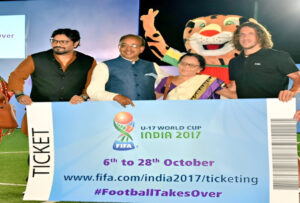
**********
It was the year 1889, three decades after the 1857 Indian rebellion known as the Sepoy Mutiny, also often described as the First War of Independence against the British, when the Mohan Bagan club was coincidentally founded on 15th August at Calcutta by Bhupendra Nath Basu with the support of Kirti Mitra and Nilkanta Sen. On its first anniversary, the name of Mohan Bagan Club was changed to Mohan Bagan Athletic Club, on the words of Professor FJ Rowe.
The 1905 declaration of the partition of Bengal by Lord Curzon outraged the Indians and sparked a huge resentment among the countrymen. That time, the club played its first big match in the Cooch Behar Cup in 1893. The club though participated in various tournaments like Trades Cup, Gladstone Cup, but could not achieve much success.
Eleven years later, Sailen Basu, a Subedar Major in the British Indian Army was appointed the coach. Then the club could earn series of victories with the winning of Trades Cup, Gladstone Cup and Coochbihar Cup in 1904. Soon, the people counted the victory of the club as their victory against the British Raj.
Tracing India’s football history, Vivek Menezes writes,
“In 1911, (Mohan) Bagan’s barefooted Bengalis defeated the British Army’s East Yorkshire Regiment, firing two goals in the last five minutes to win the Indian Football Association Shield. That real-life moment of Lagan Hindi movie, played out in front of 60,000 delirious fans. The newspapers exulted, ‘Mohuan Bagan is not a football team. It is an oppressed country rolling in the dust, which has just started to raise its head.”
In those tumultuous years, Mohan Bagan reached the final of the IFA Shield in 1911. “To see the final match, British government expects a crowd of one million people in Calcutta,” said Lt. Governor of Bengal William Duke. It was too much of an expectation. However, according to various newspapers, an estimated one lakh people arrived in Kolkata on that day to witness the final match.
On the morning of the match day, the Mohan Bagan players went to Kalighat temple to seek the blessings of Goddess ‘KALI’. On other side, thousands of people thronged from faraway places like Assam, Dhaka, Patna, Purnia, Kishanganj, etc. to watch the match. The intense was so high that the Bangiya Sahitya Parisad had to postpone their scheduled condolence meeting of Indranath Bandopadhyay. Estimating a huge turnout, the East Indian Railway Company arranged for special trains from Burdwan and Ranaghat. Special Steamers were arranged to bring people from Rayganj & Baranagar. All trams from Shyambajar & Chitpur were crowded. Had huge traffic jams near the High Court & Strand Road.
It was perhaps in 1911 that Bengal witnessed the first Illegal tickets (black tickets). On the match day, a 2 rupee ticket soar to Rs.15. Coolies were charging about 50 paise to Rs.2 to run errands. (It was huge money in those days). The Pioneer newspaper reported that vendors were selling a boiled potato for 1 paise & a paan was 1 anna!!” About 80,000 to 100,000 people gathered at the Calcutta Maidan. One side was filled up with the Calcutta Babus & the other side by the Smith Company. There was not an iota of space even on the treetops, telegraph posts & at faraway places of roofs of top buildings around. The British civilians were quite vociferous too! They had come prepared with effigies of Mohan Bagan & the Shield. News agency Reuters reported that “magnitude of the crowd was so huge that the scorers & announcers couldn’t work. The scores were broadcasted in the form of KITES in the sky!!!!” The Empire magazine even setup a temporary Telephone Exchange on the spot!!!
On the ground, the bare footed Mohan Bagan team clinched victory by defeating the British Club, East Yorkshire Regiment (2-1). Captain Shibdas Bhaduri and Abhilahsa Ghosh were the scorers.
With the second goal crossing the post at the eighty-seventh minute, Bengalis cheered with tearing off their shirts and shouting slogans ‘Vande Mataram’, reported the Reuters News Agency. The official website of the club thus wrote about the historic win, “The players were taken on a public procession atop a horse driven carriage. Both Hindus & Muslims came out with band parties. The procession reached Wellington Square after the evening. Ladies in the houses blew their conchs & lit their ‘diyas’ (lamps) in honour of the brave lads. So, the 29th of July 1911 became the Independence Day of Indian Football.
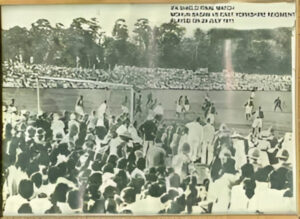
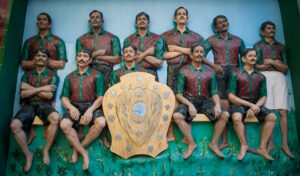
The newspaper Englishman (now Statesman) published: “Mohan Bagan has succeeded in what the Congress and the Swadeshiwallas have failed to do so far to explode the myth that the British are unbeatable in any sphere of life.”
The nationalist sentiment reached its peak, said Boria Majumdar. “It was reported in one vernacular newspaper that in the immediate aftermath of the match the European parts of the city wore a dark and deserted look reflecting something mournful. The Englishman reported that the ‘Saheb’ localities of Calcutta were engulfed by gloom after the defeat. Some Europeans even responded with bitterness,” writes Boria.
The Englishman, 31st July 1911 publication wrote:
“What the Congress failed to achieve, Mohan Bagan has. In other words, they have succeeded in degrading the English.”
Manchester Guardian wrote:
“The team comprising of the Bengalis won the IFA Shield by defeating three top military teams. 80,000 Indians will remain witnesses to this event. There is nothing to be surprised at. The team that is physically more fit, has sharp surveillance and intelligence, wins.”
Achintya Kumar Sengupta, Kallol Jug wrote:
“Mohan Bagan is not a football team. It is a tortured country, rolling in the dust, which has just started to raise its head.”
India Mirror, 30th July 1911 published:
“The Japanese victory over the Russians did not stir the East half as much as did the match between Mohan Bagan and East York.”
Singer Karuna Nidhan Bandhophyay composed a song which was published in the September-October issue of Bengali magazine ‘Manasi’ in 1911.
জেগেছে আজ দেশের ছেলে পথে লোকের ভিড়,
অন্তঃপুরে ফুটলো হাসি বঙ্গ রূপসীর।
গোল দিয়েছে গোরার গোলে বাঙালীর আজ জিত,
আকাশ ছেয়ে উঠছে উধাও উন্মাদনার গীত।
আজকের এই বিজয় বানী ভুলবে নাকো দেশ,
শাবাশ শাবাশ মোহনবাগান খেলেছো ভাই বেশ।
Match Report:
In 1911, Mohan Bagan formed a dominant side for the IFA Shield with Hiralal Mukherjee, Bhuti Sukul, Rev. Sudhir Chatterjee, Monmohun Mukherjee, Rajen Sengupta, Nil Madhav Bhattacharya, Kanu Roy, Habul Sarkar, Abhilash Ghosh, Bijoydas Bhaduri and captained by Shibdas Bhaduri. They played, rather battled out against the professionally equipped teams of St. Xavier’s College, Calcutta Rangers Club, Rifle Brigade and Middlesex Regiment to reach the IFA Shield final, and without conceding any goal.
Mohan Bagan was trailing by a goal from Sgt. Jackson of East Yorkshire Regiment within the first 15 minutes of the 90-minute-match, but Shibdas Bhaduri soon scored the equalizer in the first half and then set up Abhilash Ghosh to score the winner with just two minutes remaining for the match. Thus Mohan Bagan club became the first native team to lift the IFA Shield, that too in front of an estimated crowd of 80,000, although the referee, H.G. Pooler, estimated approximately 20,000 to be the number.
Indian supporters and the public at large went berserk. Muslim supporters went to the streets to celebrate. A large procession came on the street from Thanthania Kalibari, and a large Muslim community from Dharmatala joined the victory procession. After the match, a Brahmin asked asked Rev. Chatterjee pointing to the Union Jack fluttering atop For William, “When will that come down?” He also predicted that the flag would come down only when Mohan Bagan wins the shield next time, which coincidentally came true.
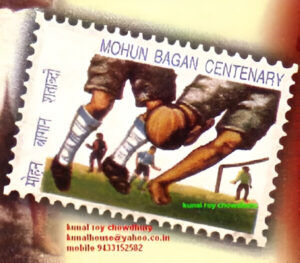
References:
https://www.mohunbaganclub.com/the-historical-triumph-of-1911-ifa-shield/
https://www.goal.com/en-in/news/u-17-world-cup-fifa-to-pay-tribute
https://timesofindia.indiatimes.com/sports/football/2017-u-17-world-cup/news
https://www.the-aiff.com/article
https://www.hindustantimes.com/football/fifa-u-17-world-cup
*********

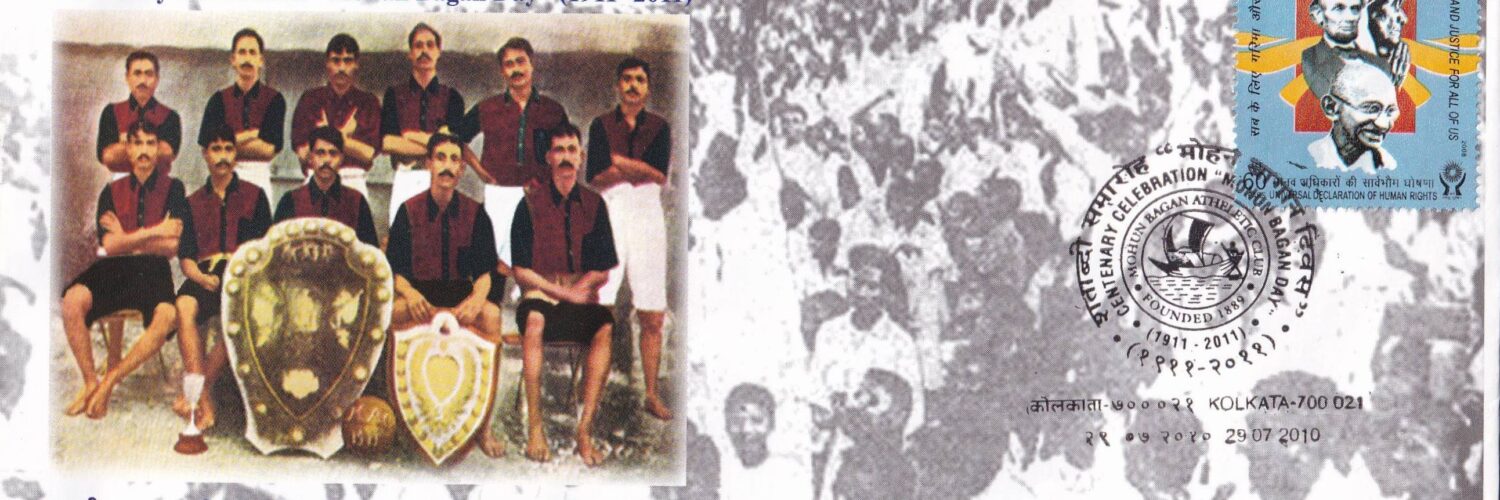

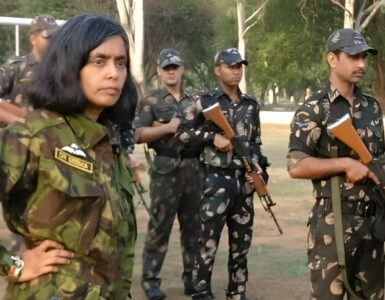










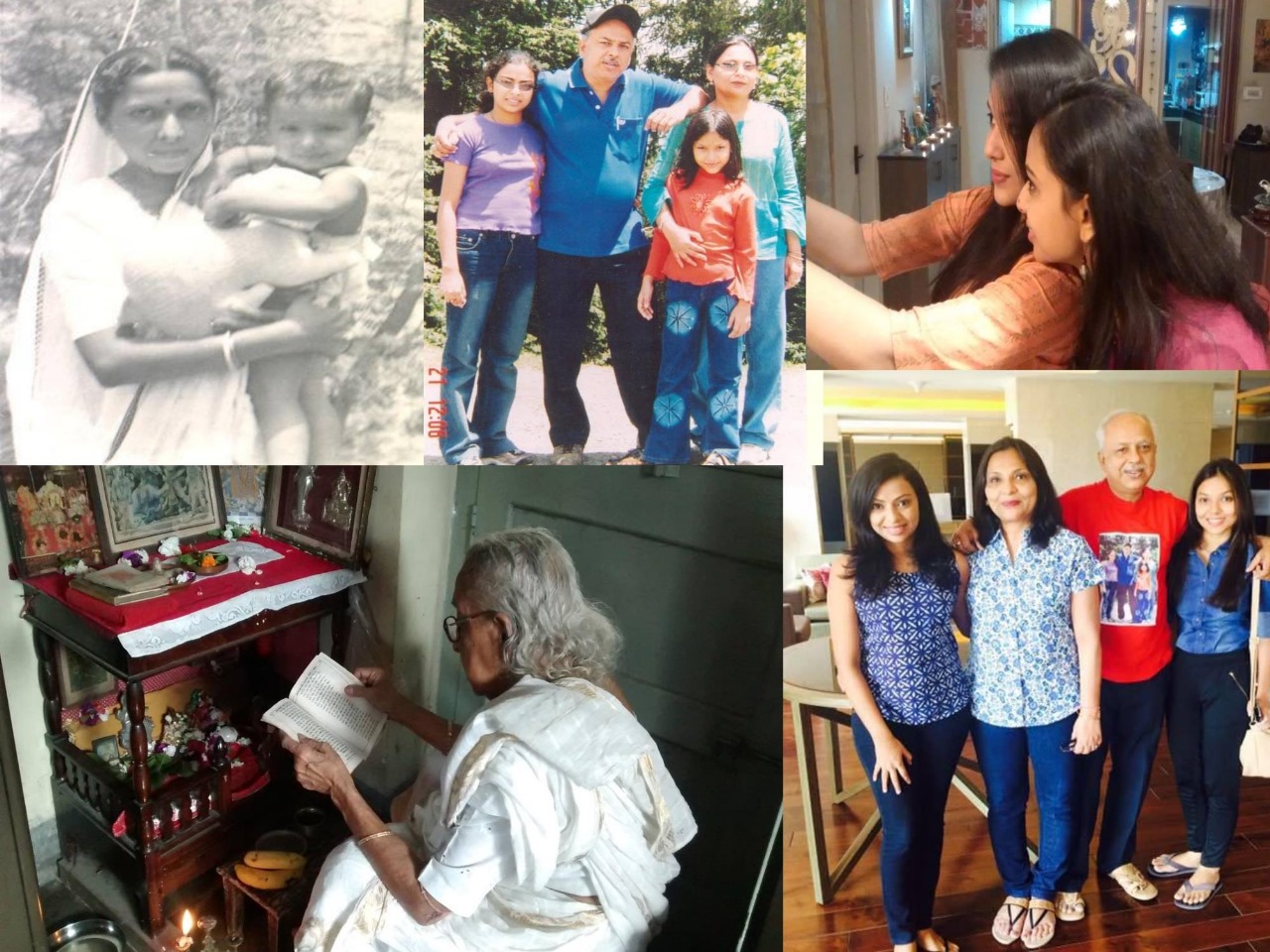
A very nice and minute report of the game which includes every details. We come to know about the expectatators along with their day long activitiea. The players were very much in the game as the result ended 2-1 in favour of Mohunbagan AC.
This requires a long effort to prepare such a detailed write up. The writer deserves a good wish.
জানতামই না যে ফিফা ২০১৭ আমাদের মোহন বাগান ক্লাবের শিল্ড জয়কে স্বীকৃতি দিয়েছে। লেখককে ধন্যবাদ জানাই, এই তথ্য শেয়ার করার জন্য।
এর সাথে আরও কিছু জানলাম।
পড়ে ভালো লাগলো।
আমাদের স্বর্ণযুগে ১৯৫১ এবং ১৯৬২ সালের এশিয়ান গেমসে দুটি স্বর্ণপদক আর ১৯৫৬ সালের গ্রীষ্মকালীন অলিম্পিকে চতুর্থ স্থান পেয়েছিলাম। এ এফ সি এশিয়ান ১৯৬৪ সালে রানার্স-আপ, ১৯৭০ মারডেকায় তিন নম্বরে।
তারপর মোটামুটি গত বছর তিরিশ ধরে আমরা মূর্খের মতন ইস্টবেঙ্গল মোহনবাগান নিয়ে মাতামাতি করেছি।
আজ এই প্রবন্ধ পড়ে খুব ভালো লাগছে, বাঙালি নয়, একজন ভারতীয় হয়ে গর্ব অনুভব করছি।
পরিষ্কার সহজ করে লেখা।
আগে মাঠে না গেলে ধারাবিবরণী শুনতাম। এই লেখা পড়ে একশ বছর আগের ময়দানের ছবি যেন চোখের সামনে দেখতে পেলাম। যদিও নেট থেকে সংগ্রহ তবু লেখক যেভাবে সংকলন করেছেন, অজস্র সাধুবাদ জানাই।
In today’s Indian soccer, specially the utmost nonsense super rubbish Mohon Bagan and East Bengal, it is left for the pleasure of only a class of brainless spectators.
This article is a fresh air, at least something readable with interest for Indian soccer, let it be a history of 100 years ago.
Our FIFA ranking is shuttliing in the range around 150, now it is 136. I was a die hard fan of East Bengal but today I am ashamed of Kolkata football..
The Spanish World Cup winner Carles Puyol rightly comments if India plays soccer.
In such contrary, FiFA acknowledges our 1911 victory is significant.
And author nicely wrote it in precise.
Well, I did not know about FIFA acknowledging and honoring the 1911 historic victory of Mohun Bagan against a British army team in the final of I F A shield.
Playing barefoot against the toughs of East York regiment, and winning by 2- 1 goals.
However, the surge of patriotic feeling in those days is difficult to measure now.
Asim has recreated the situation nicely and has made me proud and also sad as we see the meaningless fan rage now a days.
দাদা,
ফুটবল আমার বিষয় নয়, তবে হেডিং দেখে খানিক উৎসাহ নিয়ে পড়লাম। ১৯১১ সালের শিল্ড বিজয় আগে পড়েছি, তবে এত বিস্তারিত আর সুন্দরভাবে বর্ণনা আগে পড়িনি।
নিজেকে ভারতীয় মনে করে কিছুটা গৌরবও বোধ করলাম।
অপূর্ব তোমার কাহিনীর সংকলন এবং গ্রন্থনা। এতটা বিশদভাবে আমি ভারতীয়দের জয়োল্লাস অনুভব করি নি এর আগে। পড়তে পড়তে আমার শরীরে একটা শিহরণ ছড়িয়ে গেছিল। এই করুণা ব্যানার্জী মোহনবাগান ক্লাবে পরবর্তীকালে নিয়মিত খেলেছেন। লেকপ্লেসে আমরা যে বাড়িতে থাকতাম, তারই পাশের বাড়িতে থাকতেন। আমি যখন ওনার সংস্পর্শে আসি,তখন উনি খেলা থেকে অবসর নিয়েছেন। ওনার দুই মেয়ের সাথে ছোটবেলায় খেলেছি। ওনার পাশের বাড়িতে থাকতেন ইষ্টবেঙ্গল ক্লাবের প্রাক্তন অধ্যক্ষ জ্যোতিষ গুহ। তোমার লেখি পড়তে পড়তে পুরোনো স্মৃতির শিকার হয়ে গেছিলাম। তোমার বর্ণনা সত্যিই খুব ভাল লেগেছে। অনেক নতুন খবর জানা গেছে। বিশেষ করে যে বিজয়ী সঙ্গীতের উদ্ধৃতি দিয়েছ, ওটা অনেকেই জানে না। তোমার পরবর্তী বিষয়টা কি ? ভাল থেক। ♥️
দারুন লেখা! আর ফিফা র খেলোয়াড়চিত সৌজন্য বোধ গর্ব করার মতো! আরেকটা ব্যাপার বেশ অবাক করলো; সেটা হলো টিকিটের দাম দু টাকা, যা এককথায় সেই যুগে যখন সব কিছু পয়সায় লেন দেন হতো, সেই তুলনায় আয়ত্তের বাইরে, কিন্তু তাও মাঠে আশি হাজার দর্শক ভাবা যায় না! এবং সাধারণ মানুষ রাস্তায় নেমেছিল বিজয় উৎসবে, ধর্ম নির্বিশেষে। খুব ভালো লাগলো, ফুটবল নিয়ে উন্মাদনা সেই সময় ও এতোটা ছিল লেখাটা না পড়লে জানা হতো না। লিখতে থাকুন!
খালি পায়ে বুটের বিরুদ্ধে লড়াই। বেশ লাগলো লেখাটি।
Football is not my cup of tea, but having seen the title, I had the curiosity of the content, and read it, liked it.
I am sure author took much time to compile it, making it worth reading, and made the Indians to be proud enough.
A good one to read.
The 1911 Shield victory was a reality of the then patriotic movements, the presence of 80,000 supporters coming by special train and ferry was an inspiration for those barefoot fighters.
The match report has been beautifully penned down by the author.
Lastly, the FIFA recognition was not known, it’s extraaaa for me.
বাহ্, খুব সুন্দর লেখা হয়েছে। ১৯১১ সালে আমাদের মোহনবাগান ক্লাব একটা revolution এনে দিয়েছিলো এই ফুটবল খেলা উপলক্ষে। লেখক অনেক তথ্য সহকারে এই লেখা আমাদের সামনে উপস্থাপিত করেছে এরজন্য অশেষ ধন্যবাদ। খালি পায়ে গোরাদের সাথে ফুটবল খেলা এক অসাধ্য কাজ, যেটা করে দেখিয়েছিল এই মোহন বাগান দলের ছেলেরা। কতোটা মানসিক এবং শারীরিক দক্ষতা থাকলে ওরকম একটা খেলা খেলা যায় এটা তারই জ্বলন্ত উদাহরণ। এই ফুটবল খেলা জেতার মাধ্যমে আমাদের দেশের প্রত্যেক মানুষের মনে স্বাধীনতার আবেগে আন্দোলিত করেছিলো। সত্যি ওরকম জেতা এক পরাধীন দেশে অকল্পনীয় ঘটনা। এতো পুরোনো ঘটনার বিস্তারিত তথ্য একসাথে জোগাড় করে আমাদের লেখক এই লেখাটা লিখছে অসীম ধৈর্য সহকারে। আমার আন্তরিক শুভেচ্ছা এবং ভালোবাসা রইলো। ভবিষ্যতে আরো এইরকম লেখা আশা করবো। 👏🏽👌🏽🙏🏽❤
Excellent article. All the minute details of the match day are described in a very professional manner. We,the readers,are able to visualize the happening of that special day. Kudos to the writer.
My eyes become wet while reading the article and imagining the reaction of spectators when Mohon Bagan scored the winning goal against British club. Patrotism probably ran high along with joy of defeating the British club . It was not only defeating British club in football , it was also a situation as if they defeated British power in a time of Bengal division as well as revolutionary activities .
Only question come in mind – why Bengal could not maintain or upgrade their foot ball playing capabilites in present days .
পড়লাম। জানা ইতিহাস, তবে আরো অনেক কিছু নতুন নতুন তথ্য জানলাম। Updating or refreshing of knowledge. ধন্যবাদ।
যদিও আমি মোহনবাগানের সাপোর্টার নয়, তবে মোহনবাগানের এই জয়কে কুর্নিশ করি ও আমাদের গর্ব বলে মনে করি।
Thanks Ashim for the article. I have read about the much earlier. But, this is much elaborate description of the match including pre-patch atmosphere with illegal ticket selling etc. The recognition of the match during U-17 Fifa match is completly new to me. However, please check the duration of this specific match. Although the standard duration of a football match was of 90 minute duration the duration of this match was shortened as agreed by both the teams and referee. I don’t remember the reason.
Well done Asim.
Mohun Bagan’s win of IFA Shield in 1911, was a turning point of Indian Football with the first taste of Indian win over a British team and that too by a bunch of players from Bengal itself. It is a history and we all are aware of this pride.
But, what you have extracted is awesome, as always, with finer details of the match and associated national sentiments.
And, the fact of FIFA’s recognition of Mohun Bagan’s win of 1911 IFA Shield is undoubtedly appreciable and thanks to you for addressing the very event.
Keep it up.
The historic 1911 victory was the symbolic uprise against the British, and that game united all Indian communities at the Calcutta maidan ground for cheering our national heroes. I don’t understand football, neither have the interest but such events are truly patriotic.
I thank the author who could take his time and the pain of narrating it so beautifully as if we can visualise the game with our folded eyes.
Thanks
Ashim Deb’s article about FIFA’s acknowledgment of Mohun Bagan’s 1911 achievement highlights a pivotal moment in Indian football history. In 1911, Mohun Bagan became the first Indian club to win the IFA Shield, defeating the East Yorkshire Regiment 2-1 in the final. This victory was more than just a sporting milestone; it symbolized resistance against British colonial rule and instilled a sense of national pride and unity.
The win was seen as a symbolic blow to colonial rule, inspiring the Indian independence movement.
Ashim in his article has beautifully digged out all related incidences and informations to the readers that we I must appreciate his wonderful skills.
খুবই তথ্য বহুল লেখা।অনেক অজানা ইতিহাস জানাগেল।প্রত্যেক ফুটবল প্রেমী বিশেষ করে মোহনবাগান সমর্থকদের এটি পড়া উচিত।
লেখক কে ধন্যবাদ।
খুব তথ্য বহুল লেখা ….. যদিও ফুটবল সম্পর্কে কিছুই জানি না তবুও অজানাকে জেনে খুব ভালো লাগলো …..
পরাধীন ভারতের বিংশ শতাব্দীর প্রথম দিকে, প্রায় পরপর ঘটা দুই ঘটনা (প্রথমটা ১৯১১ সাল এবং দ্বিতীয় টা ১৯১৩ সালে ঘটা) প্রত্যেক বাঙালির কাছে দু দুটো গর্বের ঘটনার স্মৃতি নিয়ে আসে। ১৯১৩এ প্রথম ভারতীয় তথা বাঙালি হিসাবে রবীন্দ্রনাথের নোবেল পুরস্কার পাওয়া ও তার দু বছর আগে ১৯১১এ বাঙালির তথা ভারতের প্রতিনিধি হয়ে বৃটিশ অহংকার কে ধুলোয় লুটিয়ে দিয়ে ফুটবল মাঠে ইষ্ট ইয়র্কশায়ার রেজিমেন্ট কে ২-১ গোলে হারিয়ে দিয়ে মোহনবাগানের আই এফ এ শিল্ড জিতে নেয়ার অসাধারণ ঘটনা! অসীম দেবের লেখা মোহনবাগানের এই গৌরবগাথা পড়ে বিশদভাবে সেই গর্বের ঘটনার ইতিহাস জানলাম। ধন্যবাদ অসীম কে।
I was and still am a blind supporter of Mohu n Bagan. In those formative school going days of 50s-60s, in the evenings before any Mohun Bagan – East Bengal match, Jyatha – father’s distant widowed cousin, would sit with us in the open verandah and with moon and stars shining from the top, he would tell us about the exploits of Mohun Bagan. ‘এখন কি খেলা দেখছিস। সে ছিল একটা সময়, স্কটিশ হাইল্যান্ডার্স সব, কি খেলা তাদের,সব পাস তাদের পায়ে গিয়ে পড়ে, সেই ধরণের টিমকে হারিয়ে মোহনবাগান চ্যাম্পিয়ন হয়েছিল।’ Incidentally Jyatha was not even born then and later we learnt that East York was not from highlands though it was an army team.
Thank you Asim, by publishing this, you have brought my childhood memories back. The writing was in such details that even me, a diehard Mohun Bagan fan was not aware of all the facts. Thanks to the author for this detailed compilation from almost all available resources on this great win which in those days of subjugation gave the Indians the much needed confidence to confront their colonial masters that they also were not in anyway inferior. No wonder FIFA acknowledged this wonderful achievement of Mohun Bagan.
A thoroughly good write up on the historic win by Mohunbagan over british military team in football final match that was appropriately symbolised to nationalism.
That win was great, specially considering the fact, that Mohunbagan played bare footed.
People rushed in great number, from far away places like Assam, Dhaka, to watch the match, indicates how intense was emotion and excitement among people in general.Carry on your great endeavour to enlighten us on varied subjects.
My sincere thanks to you for this article.
The incident was repeated in the year 1970 in the same IFA Shield final when Calcutta East Bengal team had to defend the country against mighty Iranian PAS Club. 70,000 crowd witnessed the glorious fight that the East Bengal had exercised, not leaving an inch for the strong opponent. That match was also emotionally charged with our national sentiments. East Bengal, could beat PAS Club by 1-0 and glorified our football arena.
Thanks author for sharing the history, I just added a similar glory to it.
১৯১১ মানে আমার বাবার জন্মেরও অনেক আগে। যেটুকু জেনেছি প্রধানত লোকমুখে। এই প্রথম একটা স্ট্রাকচার্ড প্রবন্ধ পড়লাম। খুব সুন্দর উপস্থাপনা।
এই প্রসঙ্গে আমি ১৯৭০ শিল্ড ফাইনালে ইস্টবেঙ্গল আর ইরানের পাস ক্লাবের খেলায় মাঠে ছিলাম। সেদিনও এমনি মানসিকতা ছিল। আমরা সেদিন ইস্টবেঙ্গল নয়, একটি ভারতীয় দলের জন্য মাঠে চিৎকার করেছিলাম।
১৯১১ আর ১৯৭০ সময়ের বিচারে অনেক ফারাক। কিন্তু সেই দুটি বিশেষ দিনে আমরা বিশেষ দলকে সমর্থনের অনেক ঊর্দ্ধে গিয়ে জাতীয়তাবাদ প্রমাণ করেছিলাম।
My sincere thanks for the author, for his hard work and presenting such a composition.. With my full regards for you, I would add two incidents.
First, the Hand of God goal was a disastrous management failure of FIFA..
Second, when Sukolyan Ghosh Dastidar punched on the referee’ nose after the Calcutta durby match sometime around mid 70s.
It’s a wonderful document author, I just wanted to add two incidents.
Thanks
Story of Mohunbagan Atheletic Club winning historic IFA shield for first time in the year 1911 was known to me ,but the story of FIFA ,World governing body of football,commemorated the that event in an unique way,passed into my oblivion. Asim’s story brings that back again in my memories. In 2017 FIFA U-17 tournament in India,FIFA proposed to sale the inaugural match tickets at JLN stadium,Delhi at 7:11 pm in the evening!Just behold the timing of tickets sale! It was 07-11 pm or 19-11 hrs (1911 year).What an ingenious idea it was!
Spain ‘s 2012 Wordl Cup wining team member expressed astonishment seeing rich traditions in Indian football. I personally followed that FIFA U-17 football tournament in 2017 in television. Final match was played in Yuva Bharati Stadium,Kolkata between English and Spanish Boys. England won the match and clinched the Cup.English boy Floden was declared MOM.
Back to IFA shield,1911, India was just testing patriotism in the early twentyth century when this victory against a British army team brought a sense of triumph against colonial rules Football is such a game which brings national feelings on playground even today. Remember the excitement and animity between England and West Germany playing in 1966 World Cup football final match in Wembley stadium?It was a battle in playground.
Another IFA shield match played in 1970 at Eden Gardens,Kolkata between East Bengal club and Pas Club of Iran.East Bengal club won that match at penultimate hour by 1-0 goal.East Bengal stopper Sudhir Karmakar played his match of Life by spot jumping so high and clearing all balls from mighty and tall Iranian forwards that Pas Club could not imagine Another feature unique on that day was lighting of thousands of newspaper bundle illuminating the whole stadium at the end of game.National fervour was so high on that day in the play ground that it is still vivid in my memories.
Thinking beyond football, it was a game to protect our national sentiment. It was Indian team that played against the British, and earned our victory.
Beyond the game on the grass, it was our moral victory.